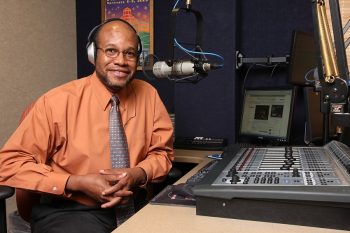Black History Month – So What Am I Supposed to Do With That?
 |
| Dr. Errington Thompson |
February is Black history month. It’s kind of like a long version of Martin Luther King’s birthday. I never am quite sure what to do for Black history month. On one hand, marches and speeches serve to remind us of Martin Luther King and the civil rights movement. But I would like to see us do more to carry on that momentum.
To give us some perspective on Black history month, I would like to compare the lives of two notable African American leaders: Dr. Martin Luther King Jr. and Dr. Charles Drew.
Dr.
King was born in Atlanta, Georgia in 1929, the eldest son of Martin
Luther King Sr. and Alberta Williams King. Both parents were educated,
which was somewhat unusual in 1929. The young Martin excelled in
school, graduating from Booker T. Washington high school at the age of
15. He was accepted into an advanced placement curriculum at Morehouse
College. At age 18, Martin decided to follow in his father’s footsteps
and become a minister. He gave his first sermon at the famed Ebenezer
Baptist Church. The following year, Martin Luther King, Jr. became an
ordained minister and graduated from Morehouse College with a
bachelor’s in sociology. He then attended Crozer Theological Seminary
in Pennsylvania, the oldest and most prestigious Baptist seminary in
the country.
While in
seminary, Martin Luther King met Abraham Johannes Muste and Mordecai
Johnson. Muste was a very influential social activist and pacifist, who
left a lasting impression on the labor movement in the early 20s and
30s and the civil rights movement through the late 60s. Johnson was the
first African-American president of a university. He was the president
of Howard University from 1926 until 1960. The writings and teachings
of the great Mahatma Gandhi were also influencing Martin Luther King
Jr. at this time.
It was no
accident that Dr. King became the face and the voice of a generation.
He was highly educated and well trained. He had the dedication, oratory
skills, and intellectual curiosity to be that leader.
Charles Drew was
born in Washington, DC in 1904, the eldest of five children. His
parents, Richard and Nora, were both high school graduates. Charles
Drew attended Dunbar high school in Washington, DC. He excelled in
sports and obtained four varsity letters. He attended Amherst College
in 1922 on a partial athletic scholarship. At Amherst, Charles was
elected the most valuable player in football as a junior. He was
captain of the track team, and won the Howard Hill Mossman trophy for
contributing the most to athletics. Although his grades were low during
his first two years, he soon caught fire academically, excelling in
chemistry and biology.
After graduating
Amherst, Charles Drew became a football coach at Morgan University and
taught biology and chemistry. While at Morgan, a friend of his from
Amherst, Calvin Coolidge’s son, died of a foot infection. This may have
stimulated Charles Drew to become a doctor.
In 1928, Charles
Drew left Morgan University and attended McGill University Medical
School in Montréal, Canada. He was elected to the National Medical
Honorary Society and Alpha Omega Alpha for his academic excellence. Dr.
Drew did his residency at the famous Freedman’s Hospital (later Howard
University Hospital) in Washington DC, and also trained with some of
the greatest American surgeons of that time at Columbia University in
New York. The chairman of the program at Columbia was Dr. Alan Whipple,
who has a pancreatic surgery named after him. On Dr. Charles Drew’s
initial letter of appointment Dr. Whipple wrote, “He is not to eat in
the dining room with the other residents.” Interestingly, when Dr. Drew
was reappointed in 1939, Dr. Whipple wrote, “He has done an
outstandingly good job…the residents insist that he eat in the dining
room with them.” Now, we must remember how competitive surgery is.
Residents would only want someone like Dr. Charles Drew around if he
made them better. He was assigned to Dr. John Scudder’s lab. Dr.
Scudder was a great American surgeon who has a lecture named after him
which is given every year at the American College of Surgeons.
While working at
Columbia University, Dr. Drew did a series of experiments on
preservation and separation of blood. The techniques that he developed
are described in his landmark paper, The Preservation of Blood. Dr.
Drew’s techniques spread widely. In Great Britain during World War II,
tens of thousands of British soldiers’ lives were saved because of Dr.
Drew’s blood preservation methods.
After completing
his fellowship at Columbia University, Dr. Drew organized the American
Red Cross, but left less than a year later because some members of
Congress insisted on segregating blood by race.
Dr. Drew became
the Chairman of Surgery at Howard University. From mid-1941 until his
death in 1950, he taught, inspiring a generation of medical students
and surgeons. In 1944, Dr. Drew won the Spingarn Medal from the NAACP
award for his research.
Both Dr. Drew
and Dr. King sought excellence. Dr. Drew was fond of saying,
“Excellence of performance will transcend artificial barriers created
by man.” The greatness of these two men can be seen not only in their
own accomplishments, but also in the accomplishments of those they
mentored. Jesse Jackson, Ambassador Andrew Young, and Congressman John
Lewis are just a few of the civil rights leaders that were with Dr.
King through the struggle. Dr. Drew’s pupils were no less successful.
Dr. Asa Yancy pioneered an operation in the early 1950s which is still
used today in children with Hirschsprung’s disease. Dr. LaSalle
Leffall, Jr, was Chairman of Surgery at Howard University for over 20
years. He also became the first black president of the American College
of Surgeons. He has won numerous honors and awards and was President of
the American Cancer Society. Both Dr. King and Dr. Drew continue to
influence far too many people to name.
So, as Black
History Month approaches, what are we doing to make ourselves better?
How are we striving for excellence? Are you pushing yourself to be the
best that you can be? If not, then maybe we’re not doing enough. This
year, for Black history month, I’m going to strive to do my best—and I
invite you to join me!







